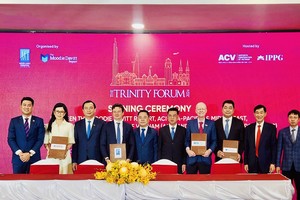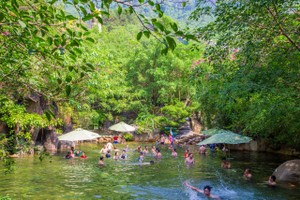Ha Noi needs to develop its own brand of tourism, focusing on craft villages, eco-tourism and cultural tourism, said Nguyen Cong Hoan, the deputy director of Ha Noi Redtours.

Hoan said that compared with the sophisticated tourist development in Trang An in Ninh Binh Province, Ha Noi was considered only a transit point when it was potentially a potential hub.
He said that to become a tourist destination, the city needed to make major changes to its planning and attract investors.
To attract businesses, Hoan said Ha Noi should issue preferential policies and conduct administrative reforms to create tourism products. Moreover, special attention should be paid to the establishment of tourism resorts and recreation centres, he added.
Hoan also said it was necessary to focus on investing in establishing attractive shopping centres, tourism areas, and big tourism projects on the outskirts of the capital city, citing Bangkok in Thailand and Kuala Lumpur in Malaysia as good examples.
Deputy Director of the Institute of Tourism Development Research, Pham Trung Luong, said regional tourism authorities had identified key tourist routes and tourism products that could create good conditions for participating localities.
However, he added, whether they were implemented in accordance with regional plans depended on the locality.
The Viet Nam National Administration of Tourism (VNAT) has completed planning for five of seven tourism development areas. These include midland and mountainous areas in North Viet Nam, the Red River Delta and coastal regions in the northeast, the north central region, the Central Highlands, and the Mekong Delta region.
"From now until the end of this year, VNAT will create mechanisms to attract enterprises to invest in tourism to serve development," said the vice-chairman of VNAT, Ha Van Sieu. He added that the Government had invested in basic infrastructure to encourage enterprises and the community to create products for tourism.
"Before investing in regions with high potential, we want to study the plans and preferential policies on tax and land lease so we can plan for long-term investments, especially in mountain regions," said one business representative.
Chairman of the Viet Nam Tourism Association, Vu The Binh, said enterprises should design tourism products because they were in contact with tourists and knew what visitors wanted.
He said State tourism agencies and localities should create favourable conditions for long-term investments and healthy competition, adding that many localities had successfully done this, including including Da Nang City and the provinces of Ninh Binh and Khanh Hoa.
In recent years, many tourism attractions in Viet Nam have been linked to investments made by enterprises, such as the Trang An Scenic Landscape Complex in Ninh Binh Province, Nha Trang in Khanh Hoa Province, and Phu Quoc in Kien Giang. Among them, Trang An is considered an ideal example of such tourism attractions.
"One of the achievements of Ninh Binh Province since 2000 is the mobilisation of all sources. including the private sector, to invest in and restore heritage sites," said the deputy director of the management board of Trang An Scenic Landscape Complex, Bui Van Manh.
"Enterprises have positively participated in protecting and promoting its heritage value by dredging lakes, building infrastructure and joining tourism promotional activities. As a result, the number of tourists visiting Trang An is on the rise," he told Tin Tuc (News) newspaper.
Deputy director of the Department of Culture, Sports and Tourism of Ninh Binh Province, Duong Thi Thanh, said that businesses played an important role in the development of tourism in the province and that they worked with local authorities to prepare proposals.
In addition, enterprises had also involved communities. Together, Thanh said, they exploited heritage values to ensure the right of the State, enterprises and local people.
























